Release Date :
Reference Number :
Issue No. 10, Series of 2016
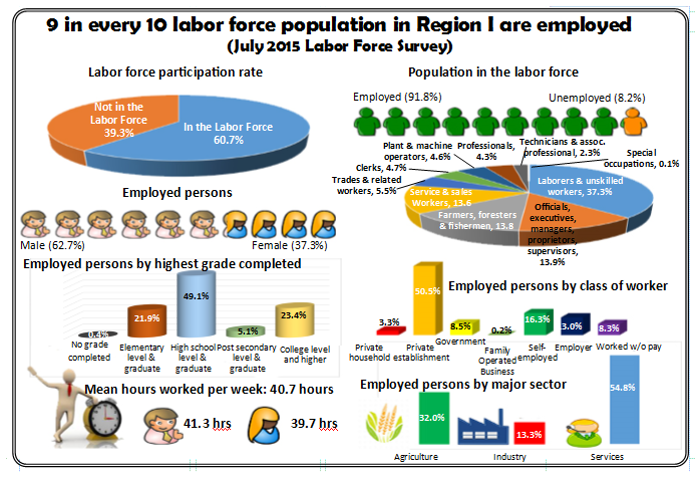
The results of the July 2015 Labor Force Survey (LFS) revealed an employment rate of 91.8 percent for Ilocos Region. This was 0.4 percentage point lower than the 92.2 percent employment rate recorded in July 2014. The employment rate of the region was lower than the 93.5 percent employment rate of the Philippines. In terms of the labor force participation rate (LFPR) in Ilocos Region posted a decline of 0.5 percentage point from 61.2 percent in July 2014 to 60.7 percent in July 2015. This was lower than the country’s LFPR of 62.9 percent in July 2015.
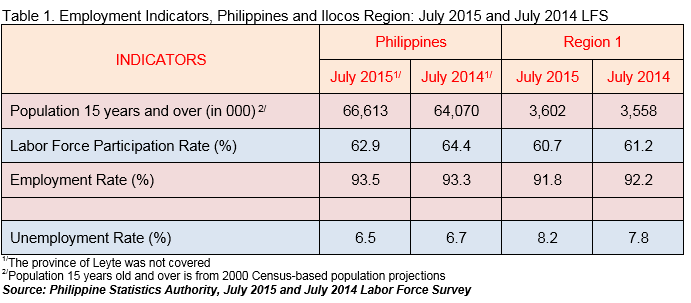
Among the regions, Central Luzon (Region III) recorded the lowest employment rate of 91.2 percent in July 2015. On the other hand, Cagayan Valley (Region II) had the highest employment rate of 96.6 percent. Meanwhile, the employment rate of Ilocos Region during the period was the same as the employment rate of the National Capital Region (NCR), and next lowest to Central Luzon (Region III).
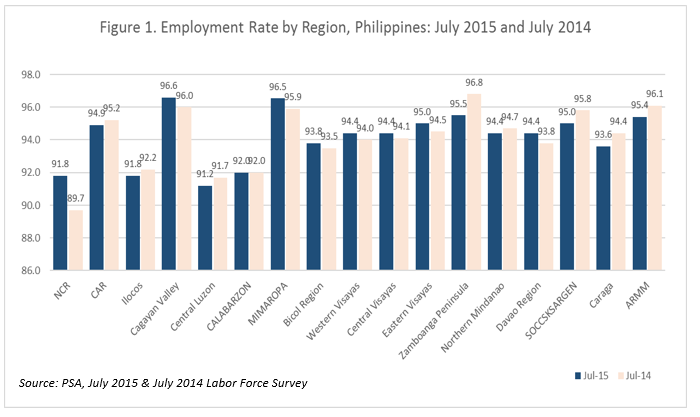
There was a decrease of 0.4 percentage point in the percentage of employed males in Ilocos Region from 63.1 percent in July 2014 to 62.7 percent in July 2015. On the other hand, an increase of 0.4 percentage point was recorded among the employed females, from 36.9 percent in July 2014 to 37.3 percent in July 2015.
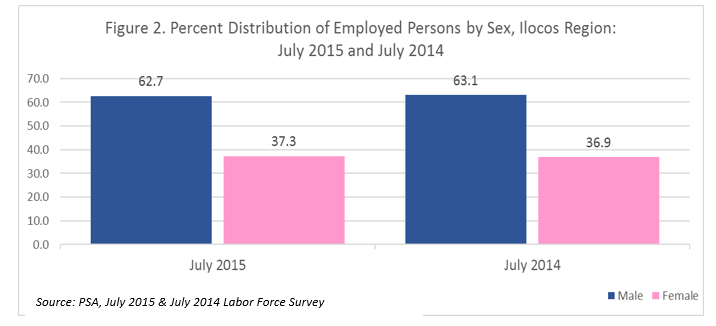
By education, 49.1 percent of the employed persons in the Ilocos Region attained high school, which was higher by 8.5 percentage points than the 40.6 percent recorded for the whole country.
About 23.4 percent of the employed persons in Ilocos Region reached college level, which was lower by 2.1 percentage points from the Philippines figure of 25.5 percent in July 2015.
On the other hand, about 5.1 percent of the employed persons in Ilocos Region attained post-secondary level, which was 0.4 percentage point higher than the 4.7 percent recorded for the whole country.
About 21.9 percent of the employed persons in Ilocos Region attained elementary level, lower by 5.8 percentage points with that of the Philippines, which was posted at 27.7 percent.
The percentage of employed persons in Ilocos Region with no grade completed was only 0.4 percent, lower by 1.1 percentage points as compared to the 1.5 percent recorded for the Philippines.
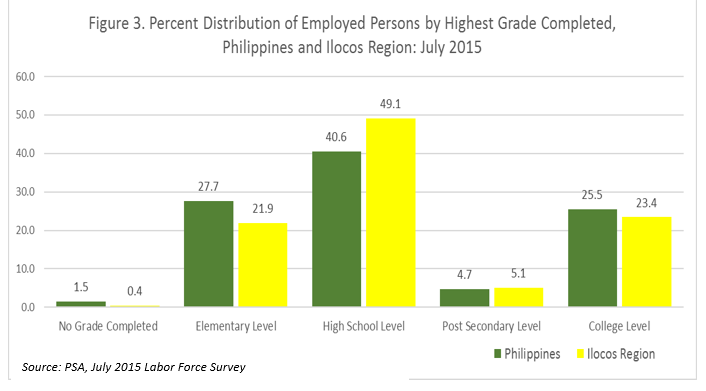
Among the various occupation groups, the laborers and unskilled workers comprised the biggest group making up more than one-third of the total employed persons in July 2015 and July 2014, at 37.3 percent and 38.9 percent, respectively.
Officials of the government and special interest organizations, corporate executives, managers, managing proprietors and supervisors made up the second largest occupation group accounting for 13.9 percent in July 2015. This occupation group was fourth in July 2014 with 12.8 percent of the total employed persons in Ilocos Region.
Farmers and fishermen group was the third biggest in July 2015 with 13.8 percent. This group was second in July 2014 with 14.8 percent.
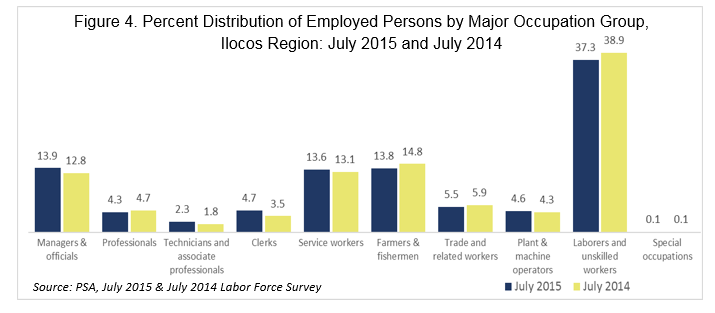
In terms of the percent distribution of employed persons by major industry, workers in the services sector accounted the largest group of workers, making up 54.8 percent and 53.5 percent of the total employed in Ilocos Region in July 2015 and July 2014, respectively.
Workes in the agriculture sector, on the other hand, comprised the second largest group in Ilocos Region, accounting for 32.0 percent and 34.1 percent in July 2015 and July 2014, respectively.
Meanwhile, workers in the industry sector made up 13.3 percent of the total number of employed persons in Ilocos Region in July 2015, and 12.5 percent in July 2014

Almost half (46.2%) of the employed persons in Ilocos Region worked for private establishments in July 2015. This was slightly higher than the figure obtained in July 2014 with 44.7 percent. Self-employed individuals ranked second with 25.8 percent of the total employed persons in Ilocos Region. This was lower by 1.5 percentage points as compared to July 2014 with 27.3 percent. The third biggest class of workers in July 2015 were those in government and those who worked without pay in their own family operated farm or business with a share of 8.8 percent each. On the other hand, the proportion of individuals who worked for private households in July 2015 was 5.2 percent as compared to 5.1 percent in July 2014. Only 0.2 percent were individuals who operated their own business without any paid employee.

The average number of hours worked per week of employed persons in Ilocos Region was 40.7 hours. Male workers tend to have longer average number of working hours per week (41.3 hours) than their female counterparts (39.7 hours). It can also be noted that larger proportion of employed males worked 20 hours or more per week. On the other hand, majority of the employed individuals who did not work during the reference period were males (57.9 percent) as compared to females (42.1 percent).
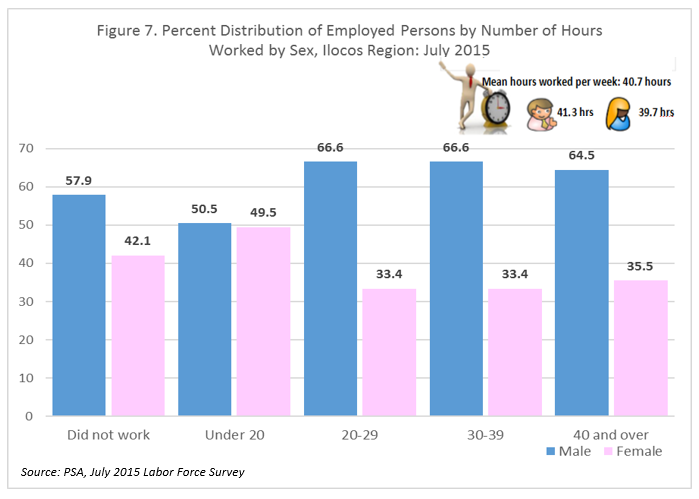
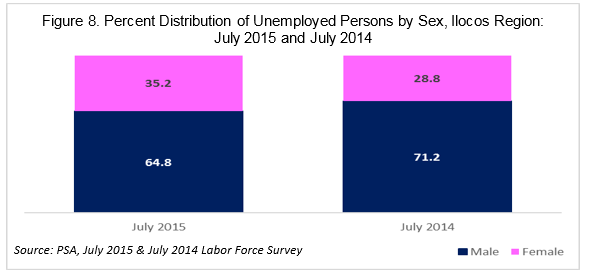
In July 2015, 64.8 percent of the unemployed persons in Ilocos Region were males and 35.2 percent were females. Compared to the figure in July 2014, the proportion of unemployed females increased by 6.4 percentage points.
In terms of job hunting, unemployed persons in Ilocos Region looked for work for more than a month (4.3 weeks) on the average before landed a job or stopped looking for a job. The shortest duration for job hunting was recorded by MIMAROPA (Region IV-B) with an average of 3.3 weeks, while the longest duration was reported in Autonomous Region in Muslim Mindanao (ARMM) with 19.7 weeks, on the average.
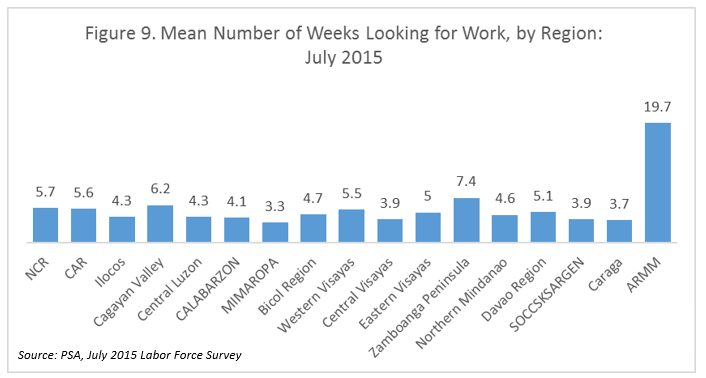
Statistical Tables
Table 2. Labor Force Participation, Employment, Unemployment and Underemployment Rates by Region: July 2015.
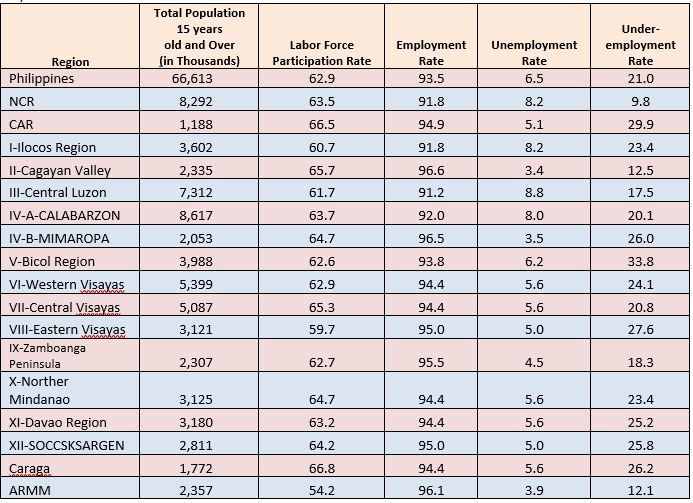
Table 3. Percent Distribution of Population 15 Years Old and Over by Employment Status and Sex, Philippines and Ilocos Region: July 2015.
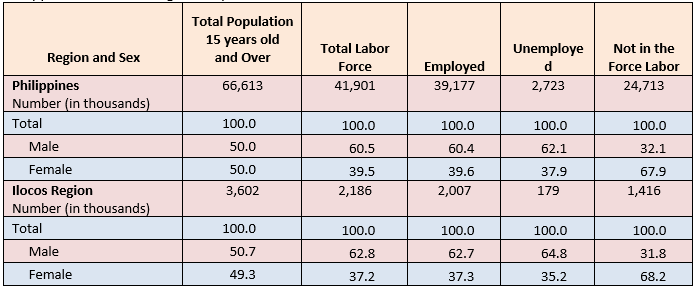
Table 4. Percent Distribution of Employed Persons by Highest Grade Completed and Sex, Philippines and Region I: July 2015
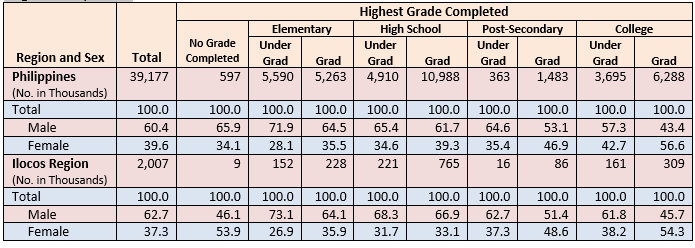
Table 5. Percent Distribution of Employed Persons by Sex and Major Occupation Group, Philippines and Ilocos Region: July 2015
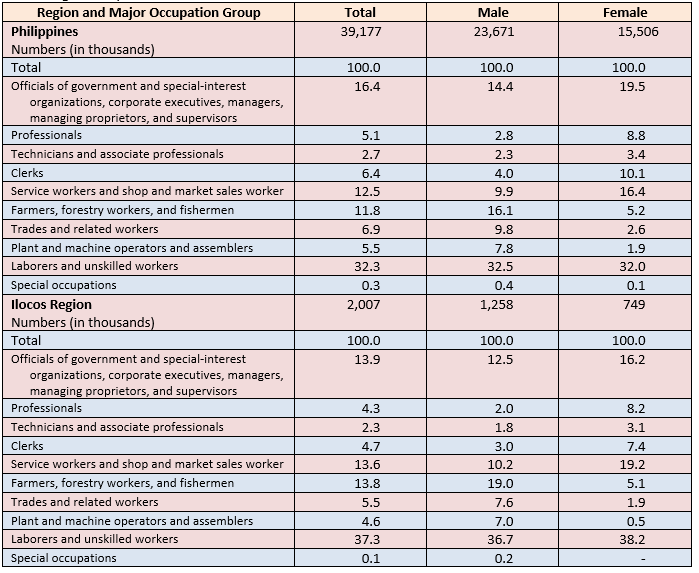
Table 6. Percent Distribution of Employed Persons by Sex and Major Industry Group, Philippines and Ilocos Region: July 2015

Table 7. Percent Distribution of Employed Persons by Sex and Class of Worker, Philippines and Ilocos Region: July 2015
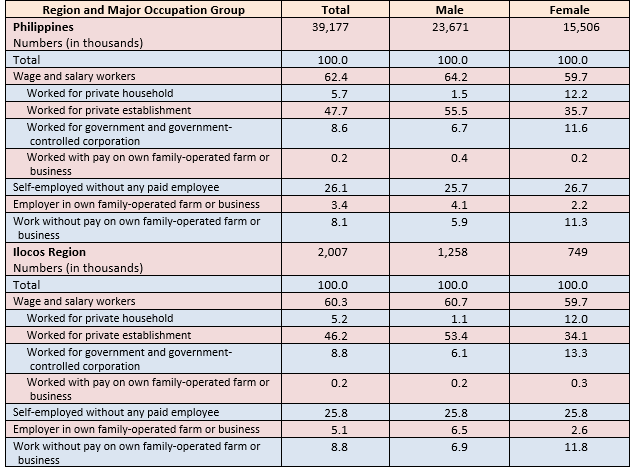
Table 8. Percent Distribution of Employed Persons by Total Hours Worked by Sex, Philippines and Region I: July 2015

Table 9. Percent Distribution of Unemployed Persons Looking for Work by Number of Weeks Looking for Work, Philippines and Region I: July 2015

TECHNICAL NOTES
-
Starting July 2003, the Labor Force Survey (LFS) adopted the 2003 Master Sample Design, with a sample size of approximately 50,000 households.
-
Starting in the January 2012 LFS, the codes for industry adopted the 2009 Philippine Standard Industrial Classification (PSIC). Prior to this, codes for industry used the 1994 PSIC.
-
Starting in the January 2012 LFS, more detailed categories for highest grade completed used in the 2010 Census of Population and Housing (CPH) were also adopted.
-
Starting in the January 2012 LFS, a question on whether a household member is a graduate of a technical vocational course was asked for each person 15 years or older.
-
Starting April 2005, the new unemployment definition was adopted per NSCB Resolution Number 15 dated October 20, 2004. As indicated in the said resolution, the unemployed include all persons who are 15 years and over as of their last birthday and are reported as: (1) without work and currently available for work and seeking work; or (2) without work and currently available for work but not seeking work for the following reasons.
-
Tired/believed no work available2. Awaiting results of previous job application3. Temporary illness/disability4. Bad weather5. Waiting for rehire/job recall
-
Starting with the January 2007 LFS round, the population projections based on the 2000 Census of Population and Housing was adopted to generate the labor force statistics. This is in compliance with NSCB Resolution No. 1 series of 2005 entitled “Adoption of the Methodology Used in Generating the 2000 Census of Population and Housing-Based National Population Projections”.

